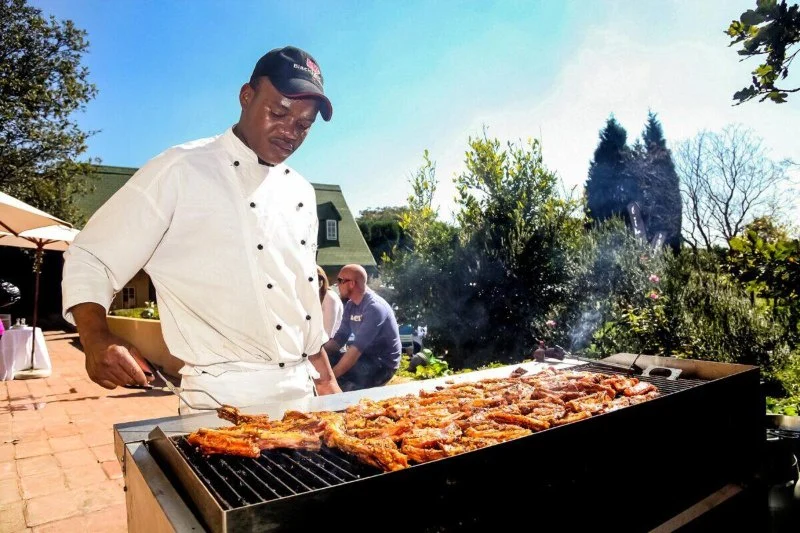
How Barbecue Restaurants Are Evolving With Modern Cooking Techniques
- Overview of Modern Barbecue Trends
- Incorporating New Cooking Techniques
- The Impact of Technology on Barbecue Restaurants
- Chef Stories and Examples of Evolution
- Where to Experience Evolved Barbecue
1. Overview of Modern Barbecue Trends
Barbecue has long been a staple of American cuisine, evoking rich traditions and iconic flavors. However, the world of barbecue has been undergoing a transformation in recent years, as restaurants across the U.S. embrace modern cooking techniques to elevate the classic flavors of smoked meats, grilled vegetables, and sauces. This evolution is not just about adapting to current food trends; it's about pushing the boundaries of what barbecue can be in terms of taste, texture, and presentation.
As barbecue restaurants evolve, many are incorporating new cooking methods, technology, and even sustainable practices to stay relevant and offer customers a unique dining experience. In this article, we’ll explore how these innovations are reshaping the barbecue landscape and giving rise to new flavors and dining experiences.
2. Incorporating New Cooking Techniques
While traditional barbecue cooking methods like smoking, grilling, and roasting are still fundamental to the craft, many modern barbecue restaurants are experimenting with cutting-edge cooking techniques. Here are a few of the most popular methods being used today:
- Sous-Vide Cooking: This method involves cooking meat in a vacuum-sealed bag submerged in warm water at a precise temperature. Sous-vide cooking ensures that the meat remains tender and juicy, and many barbecue chefs are using this technique before finishing the meat on the smoker or grill. The result is a perfectly cooked cut of meat with enhanced flavor and moisture.
- Charcoal and Wood Pellet Grills: While traditional charcoal and wood have always been a part of barbecue, restaurants are now using advanced charcoal and wood pellet grills for more consistent temperatures and flavors. Wood pellet grills, for example, allow for a wider variety of flavors by using different types of wood pellets (hickory, mesquite, applewood, etc.), which provide a distinct smokiness to the meat.
- Smoker Modifications: Modern smokers are being equipped with more advanced technology, such as digital temperature controllers and automated systems that ensure precise cooking. These modifications make the smoking process more consistent and less time-consuming for chefs while ensuring that the flavors develop perfectly.
- Reverse Searing: Reverse searing is becoming increasingly popular for steaks and other meats. The process involves cooking meat at a low temperature first (often in an oven or smoker), followed by a quick, high-heat sear to lock in the juices and create a crispy, caramelized crust. This technique has gained attention in barbecue restaurants as a way to achieve the perfect balance of tenderness and flavor.
3. The Impact of Technology on Barbecue Restaurants
Technology is playing a significant role in the evolution of barbecue restaurants. From precision cooking equipment to social media marketing, here’s how technology is impacting the barbecue scene:
- Smart Grills and Smokers: The rise of Wi-Fi-enabled grills and smokers has made it easier for chefs to monitor temperatures and adjust cooking times remotely. This technology allows for more precise control over the cooking process, leading to consistently better results. These tools are particularly beneficial for high-volume barbecue restaurants that need to maintain quality across large orders.
- Food Delivery and Online Ordering: Many barbecue restaurants are embracing food delivery apps and online ordering platforms to cater to the growing demand for convenience. By offering takeout and delivery, barbecue joints are able to reach new customers while still maintaining the integrity of their traditional flavors.
- Social Media and Branding: Social media platforms like Instagram, Facebook, and TikTok have become essential tools for barbecue restaurants to showcase their creative dishes and attract a wider audience. By sharing photos of mouthwatering ribs, innovative side dishes, and new barbecue creations, restaurants can create buzz and engage with their community online.
4. Chef Stories and Examples of Evolution
As barbecue continues to evolve, many chefs and restaurant owners are embracing innovation and creativity to push the boundaries of traditional barbecue. One example is Rodney Scott, a celebrated pitmaster from South Carolina who has gained national recognition for his unique take on whole-hog barbecue. Scott has modernized the traditional method of cooking whole pigs by introducing precision cooking techniques, such as sous-vide, while still staying true to the authentic flavors of his region.
Another example is Franklin Barbecue in Austin, Texas, known for its innovative use of wood and fire. Chef Aaron Franklin has mastered the art of slow-smoking brisket and is constantly experimenting with new wood combinations and smoking techniques to achieve the perfect flavor. His mastery of modern barbecue techniques has earned Franklin Barbecue national acclaim, and his approach is a great example of how tradition and innovation can coexist in the barbecue world.

little uluh (Flushing) / little uluh flushing
36-03 Prince St 3rd fl, Flushing, NY 11354, USA
5. Where to Experience Evolved Barbecue
If you’re looking to experience how barbecue restaurants are evolving, here are a few places to check out across the U.S.:
- Franklin Barbecue – Austin, Texas: Known for its long lines and world-famous brisket, Franklin Barbecue is a must-visit for barbecue enthusiasts looking to experience modern techniques combined with traditional Texas barbecue.
- Rodney Scott’s BBQ – Charleston, South Carolina: This spot is a testament to the power of innovation in traditional barbecue. Rodney Scott has expanded his reach by incorporating modern cooking techniques while maintaining the authenticity of his Southern barbecue roots.
- The Brisket House – New York City, New York: The Brisket House blends classic barbecue with urban innovation, offering a unique twist on smoked meats and side dishes while experimenting with cooking methods like reverse searing and sous-vide.
These restaurants showcase how barbecue can evolve while still honoring its history, and they offer a glimpse into the future of this beloved American cuisine.








 Courtside Seafood Restaurant4.0 (33 reviews)
Courtside Seafood Restaurant4.0 (33 reviews) Mi Tierra4.0 (223 reviews)
Mi Tierra4.0 (223 reviews) Chef CBTM Bistro4.0 (103 reviews)
Chef CBTM Bistro4.0 (103 reviews) Cafe Nube4.0 (270 reviews)
Cafe Nube4.0 (270 reviews) Golden Crest4.0 (242 reviews)
Golden Crest4.0 (242 reviews) McDonald's3.0 (1258 reviews)
McDonald's3.0 (1258 reviews) How Brunch Restaurants Are Creating Seasonal Menus That Delight Guests
How Brunch Restaurants Are Creating Seasonal Menus That Delight Guests Discovering Pizza Restaurants That Feature International Toppings and Styles
Discovering Pizza Restaurants That Feature International Toppings and Styles How Brunch Restaurants Are Combining Healthy Options With Indulgent Favorites
How Brunch Restaurants Are Combining Healthy Options With Indulgent Favorites Discovering Pizza Restaurants That Experiment With Creative Toppings and Styles
Discovering Pizza Restaurants That Experiment With Creative Toppings and Styles How Wine Bars Are Hosting Tastings to Introduce New Varieties
How Wine Bars Are Hosting Tastings to Introduce New Varieties How Coffee Shops Are Offering Exclusive Seasonal Beverages That Attract New Customers
How Coffee Shops Are Offering Exclusive Seasonal Beverages That Attract New Customers